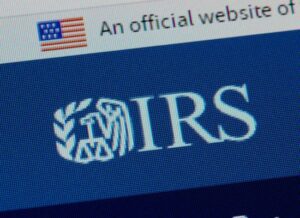Real estate investors often unload one property and replace it with another. But making an outright sale of an appreciated property results in a current tax hit. That’s unfortunate if you intend to use the sales proceeds to buy replacement property. The good news: Section 1031 of the Internal Revenue Code allows you to postpone your tax bill by arranging for a property exchange. With real estate prices up dramatically in many markets, the Section 1031 exchange strategy is perhaps more attractive than ever. Here’s what you need to know.
Important: Thanks to the Tax Cuts and Jobs Act (TCJA), tax-deferred Section 1031 treatment is no longer allowed for exchanges of personal property — such as equipment and certain personal property building components — that are completed after December 31, 2017. Thankfully, real property exchanges are unaffected by this law change.
Like-Kind Exchange Tax Basics
You can arrange for tax-free real property Section 1031 exchanges as long as the relinquished property (the property you unload in the exchange) and the replacement property (the property you receive in the exchange) are of “like-kind.” As explained later, the like-kind requirement is easy to meet.
To avoid any current taxable gain, however, you also must avoid receiving any “boot.” Boot means cash and/or property that is not like-kind property. When mortgaged properties are involved, boot also includes the excess of the mortgage on the relinquished property (the debt you get rid of) over the mortgage on the replacement property (the debt you assume).
If you receive any boot, you are taxed currently on gain equal to the lesser of:
- The value of the boot or
- Your overall gain on the transaction based on fair market values.
So if you receive only a small amount of boot, your swap will still be mostly tax-free (as opposed to completely tax-free). On the other hand, if you receive lots of boot, you could have a big taxable gain.
The easiest way to avoid receiving any boot is to swap a less-valuable property for a more-valuable property. That way, you’ll be paying boot rather than receiving it. Paying boot won’t trigger a taxable gain on your side of the deal.
The deferred gain (the gain that is currently untaxed) in a Section 1031 swap is effectively rolled over into the replacement property where it remains untaxed until you sell that property in a taxable transaction. However, under the current federal income tax rules, if you still own the replacement property when you die, the tax basis of the property is stepped up to FMV as of the date of death — or as of six months later if your executor makes that choice.
This beneficial provision basically washes away most or all of the taxable gain on the replacement property. If your heirs sell the property, they would only be taxed on gain that accrued after the magic date, if any. Nice! The Section 1031 exchange privilege and the basis step-up-on-death rule are two big reasons why fortunes have been made in real estate.
What Constitutes Like-Kind Property?
Good question. A property exchange only qualifies for tax-deferred Section 1031 treatment when the relinquished and replacement properties are of “like kind.” Fortunately, when it comes to real estate, the definition of like-kind property is super-liberal. For example, you can swap improved real estate for raw land, a strip center for an apartment building, a boat marina for a golf course, and so forth. However, you cannot swap appreciated real property for personal property without triggering a taxable gain. For example, you can’t swap a building for an airplane or a yacht. Finally, you can’t swap property held for personal use, such as a personal residence, unless you first convert the residence into a rental property.
A Deferred Like-Kind Exchange
As you might imagine, it’s usually difficult (if not impossible) for someone who wants to make a Section 1031 property swap to locate another party who owns suitable replacement property and who also wants to make a Section 1031 swap rather than a cash sale. The saving grace is that properly executed deferred exchanges can also qualify for tax-deferred Section 1031 exchange treatment.
Under the deferred exchange rules, you need not make a direct and immediate swap of one property for another. Instead, you can effectively sell the relinquished property for cash, park the cash sales proceeds with an intermediary who basically functions as your agent, locate a suitable replacement property later, and then arrange for a tax-deferred Section 1031 exchange by having the intermediary buy the property on your behalf. Here’s how a typical deferred exchange works.
- You transfer the relinquished property (the property you want to swap) to a qualified exchange intermediary. The intermediary’s role is simply to facilitate a Section 1031 exchange for a fee which is usually based on a sliding scale according to the value of the deal. In percentage terms, intermediary fees are generally quite reasonable.
- Next the intermediary arranges for a cash sale of your relinquished property. The intermediary then holds the resulting cash sales proceeds on your behalf.
- The intermediary then uses the cash to buy suitable replacement property that you’ve identified and approved in advance.
- Finally, the intermediary transfers the replacement property to you to complete the exchange.
From your perspective, this series of transactions counts as a tax-deferred Section 1031 exchange, because you wind up with the replacement property without ever having actually seen the cash that greased the skids for the underlying transactions.
Timing Requirements for Deferred Exchanges
In order for your deferred exchange to qualify for tax-deferred Section 1031 treatment, you must meet two important requirements.
- You must unambiguously identify the replacement property before the end of a 45-day identification period. The period commences when you transfer the relinquished property. You can satisfy the identification requirement by specifying the replacement property in a document given to the intermediary. In fact, that document can list up to three different properties that you would accept as suitable replacement property.
- You must receive the replacement property before the end of the exchange period, which can be no more than 180 days. Like the identification period, the exchange period also commences when you transfer the relinquished property. The exchange period ends on the earlier of: 180 days after the transfer or the due date (including extensions) of your federal income tax return for the year that includes the transfer date. When your tax return due date would cut the exchange period to less than 180 days, you can simply extend your return. That restores the full 180-day period.
Conclusion
While the tax advantages of a Section 1031 exchange can be huge, these deals can get complicated. Time may be of the essence if the market for your property is now slowing down, but you want to acquire replacement property in a market that seems to still have upside potential.
Contact Tom Bailey for more information via our online contact form.
Councilor, Buchanan & Mitchell (CBM) is a professional services firm delivering tax, accounting and business advisory expertise throughout the Mid-Atlantic region from offices in Bethesda, MD and Washington, DC.




